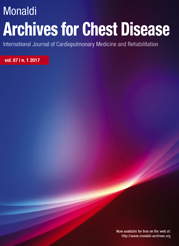Pentraxin-3 as a novel biomarker in predicting outcomes of nosocomial pneumonia: a prospective observational study
All claims expressed in this article are solely those of the authors and do not necessarily represent those of their affiliated organizations, or those of the publisher, the editors and the reviewers. Any product that may be evaluated in this article or claim that may be made by its manufacturer is not guaranteed or endorsed by the publisher.
Authors
Pneumonia, among all nosocomial infections, is known for its dismal prognosis, imposing substantial morbidity and mortality. While the diagnostic performance of various blood biomarkers has undergone scrutiny, their prognostic implications remain relatively unexplored. This study aimed to evaluate the prognostic significance of clinical factors, microbial etiology, and blood biomarkers, including procalcitonin, C-reactive protein (CRP), and pentraxin-3, in determining the outcome of nosocomial pneumonia. We enrolled 72 patients with microbiologically confirmed hospital-acquired pneumonia (HAP) or ventilator-associated pneumonia (VAP). Patient data comprising demographics, comorbidities, duration of hospitalization, isolated pathogen, and laboratory parameters, including CRP, procalcitonin, and pentraxin-3 levels, were compiled to assess their correlation with 28-day survival outcomes. The study included 58 VAP and 14 HAP patients. The mean age was 52.78±16.98 years, and the majority were males (68.06%). Out of 72, 30 (41.67%) died. Carbapenem-resistant Acinetobacter baumannii (44.44%) and Carbapenem-resistant Enterobacteriaceae (25%) were the most common isolated pathogens. On univariate analysis, male gender, smoking, opium addiction, underlying neurological condition as comorbidity, presence of septic shock, elevated blood urea, and serum pentraxin-3 levels were significantly associated with 28-day mortality. However, multivariate analysis of subgroup data revealed serum pentraxin-3 levels to be an independent risk factor for mortality in VAP patients. Serum pentraxin-3 levels may be a potential and superior prognostic marker compared to CRP and procalcitonin in predicting mortality in VAP patients.
Ethics approval
The study protocol was approved by the Institutional Ethics Committee of All India Institute of Medical Sciences, Jodhpur, Rajasthan (AIIMS/IEC/2022/3940).How to Cite

This work is licensed under a Creative Commons Attribution-NonCommercial 4.0 International License.






